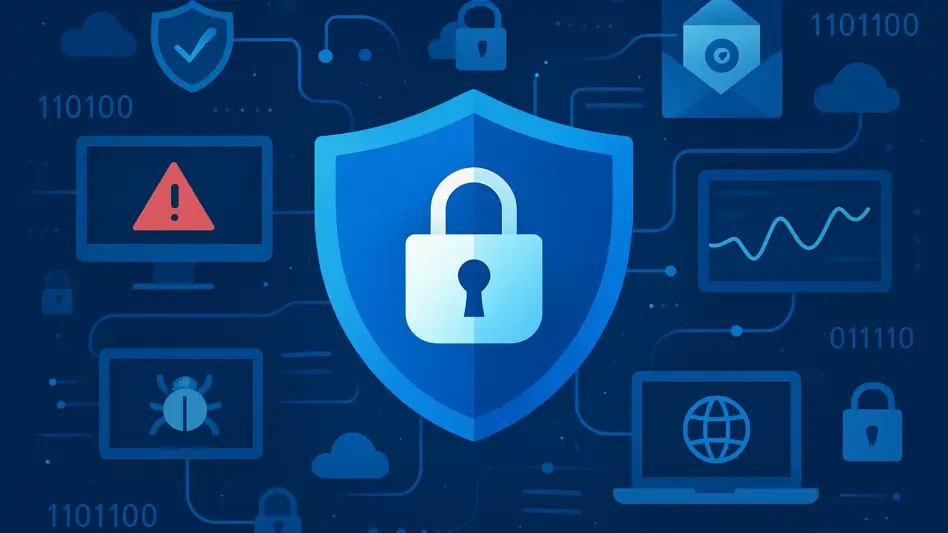In an era where cyber threats evolve at an alarming pace, organizations face the daunting task of protecting their digital assets from increasingly sophisticated attacks that can disrupt operations and compromise sensitive data, while the rise in ransomware, phishing schemes, and insider threats creates an urgent need for advanced security solutions. These solutions must not only detect but also respond to incidents with speed and precision. Microsoft Defender XDR emerges as a pivotal tool in this landscape, offering a comprehensive platform designed to streamline incident response and fortify defenses. By integrating cutting-edge technologies and fostering a collaborative approach, this solution addresses the critical challenges faced by security teams. The following discussion delves into the specific ways this platform transforms the management of cyber incidents, highlighting its innovative features and the broader impact on organizational security.
Unveiling the Core Capabilities
Harnessing AI for Faster Threat Analysis
The integration of artificial intelligence in cybersecurity has become a game-changer, and Microsoft Defender XDR leverages this technology to enhance the speed and accuracy of threat analysis. A standout feature is the Security Copilot, which automates the consolidation of multiple alerts into concise, actionable summaries. This functionality enables security teams to quickly grasp the full scope of an incident, identifying affected devices and at-risk identities without wading through a deluge of raw data. The result is a significant reduction in the time spent on initial investigations, allowing professionals to pivot swiftly to mitigation strategies. This AI-driven approach not only boosts efficiency but also minimizes the risk of human error during high-pressure situations, ensuring that critical details are not overlooked in the heat of a response.
Beyond the automation of summaries, the adaptability of AI within Microsoft Defender XDR offers additional layers of support for incident response teams. Users have the flexibility to cancel or regenerate incident summaries as needed, tailoring the information to specific contexts or evolving threats. This customization ensures that the insights provided remain relevant, even as the nature of an incident shifts. Moreover, the platform’s ability to incorporate threat intelligence into these summaries equips teams with a broader understanding of the attack landscape, connecting individual incidents to larger patterns or campaigns. Such depth of analysis empowers organizations to anticipate potential escalations and fortify their defenses proactively, marking a shift toward a more predictive and less reactive security posture.
Streamlining Incident Management Processes
Incident management often involves navigating a complex web of alerts and data points, a process that can overwhelm even the most seasoned teams. Microsoft Defender XDR tackles this challenge head-on by providing a centralized interface that simplifies the handling of security events. Upon accessing an incident page, users are greeted with an automatically generated overview that distills critical information into a digestible format. Details such as the number of impacted assets and the severity of the threat are presented clearly, enabling rapid decision-making. This streamlined approach reduces the cognitive load on responders, allowing them to focus on strategic actions rather than getting bogged down in minutiae, ultimately accelerating the path to resolution.
Another dimension of this streamlined process is the emphasis on actionable outcomes within Microsoft Defender XDR. The platform not only identifies the scope of an incident but also highlights key areas for intervention, guiding teams toward effective containment and recovery steps. This prioritization of actionable intelligence ensures that resources are allocated efficiently, addressing the most pressing risks first. Additionally, the system’s design fosters collaboration among team members by presenting unified data views, minimizing miscommunication during high-stakes scenarios. By transforming chaotic alert streams into structured insights, the platform redefines how organizations approach incident management, setting a new standard for operational clarity and response effectiveness.
Building a Collaborative Security Ecosystem
Encouraging User Feedback for Continuous Improvement
A distinctive strength of Microsoft Defender XDR lies in its commitment to evolving through user input, ensuring that the platform remains aligned with real-world needs. By incorporating a simple feedback mechanism, such as clicking an icon to rate the usefulness of Copilot-generated summaries, the tool invites direct contributions from its user base. This iterative process allows developers to refine algorithms and address gaps in functionality, enhancing the platform’s reliability over time. Such an approach reflects a broader trend in cybersecurity toward user-centric design, where tools are not static but adapt based on practical experiences, ultimately creating a more robust defense mechanism for organizations of all sizes.
The impact of this feedback loop extends beyond mere technical adjustments, fostering a sense of ownership among users of Microsoft Defender XDR. When security professionals see their suggestions shaping the tool’s capabilities, it builds trust in the platform and encourages active engagement. This dynamic also ensures that the solution remains relevant amid rapidly changing threat landscapes, as user insights often highlight emerging challenges before they become widespread. Furthermore, the continuous improvement driven by feedback helps maintain a competitive edge, positioning the platform as a forward-thinking solution that evolves in tandem with the needs of its community, thereby strengthening overall incident response frameworks.
Fostering Community Engagement for Shared Growth
Beyond individual feedback, Microsoft Defender XDR emphasizes the value of collective learning through its integration with a broader security community. This network provides a space for professionals to connect, exchange insights, and discuss best practices, creating a repository of shared knowledge that benefits all participants. Engaging with peers allows users to gain perspectives on diverse threat scenarios and response strategies, enriching their own approaches to incident management. This collaborative environment serves as a vital resource, especially for organizations with limited in-house expertise, offering access to a wealth of experience that can inform more effective security policies.
The community aspect of Microsoft Defender XDR also plays a crucial role in amplifying the platform’s impact on cybersecurity resilience. By facilitating discussions and knowledge-sharing, it helps standardize response methodologies across different sectors, reducing disparities in preparedness. This collective growth mindset ensures that even smaller entities can adopt advanced practices typically reserved for larger enterprises. Additionally, the sense of camaraderie within the community encourages ongoing participation, sustaining a cycle of learning and improvement. Reflecting on past efforts, the collaborative initiatives driven by this platform have proved instrumental in elevating industry-wide standards for incident response, paving the way for more unified defenses against digital threats.
Reflecting on Transformative Impacts
Looking back, the deployment of Microsoft Defender XDR marked a significant turning point in how organizations tackled cyber incidents, blending automation with human collaboration to create a formidable defense mechanism. The AI-driven summaries and streamlined processes drastically cut down response times, while the emphasis on user feedback and community engagement built a foundation of trust and adaptability. For those navigating the complexities of modern cybersecurity, the next steps involve a deeper integration of such advanced tools into existing frameworks, ensuring that every layer of defense is fortified. Exploring further enhancements through active participation in security communities also emerges as a critical strategy, promising to keep defenses aligned with emerging threats. Ultimately, the journey with this platform highlights the necessity of embracing innovation and collaboration as enduring pillars for safeguarding digital environments.








